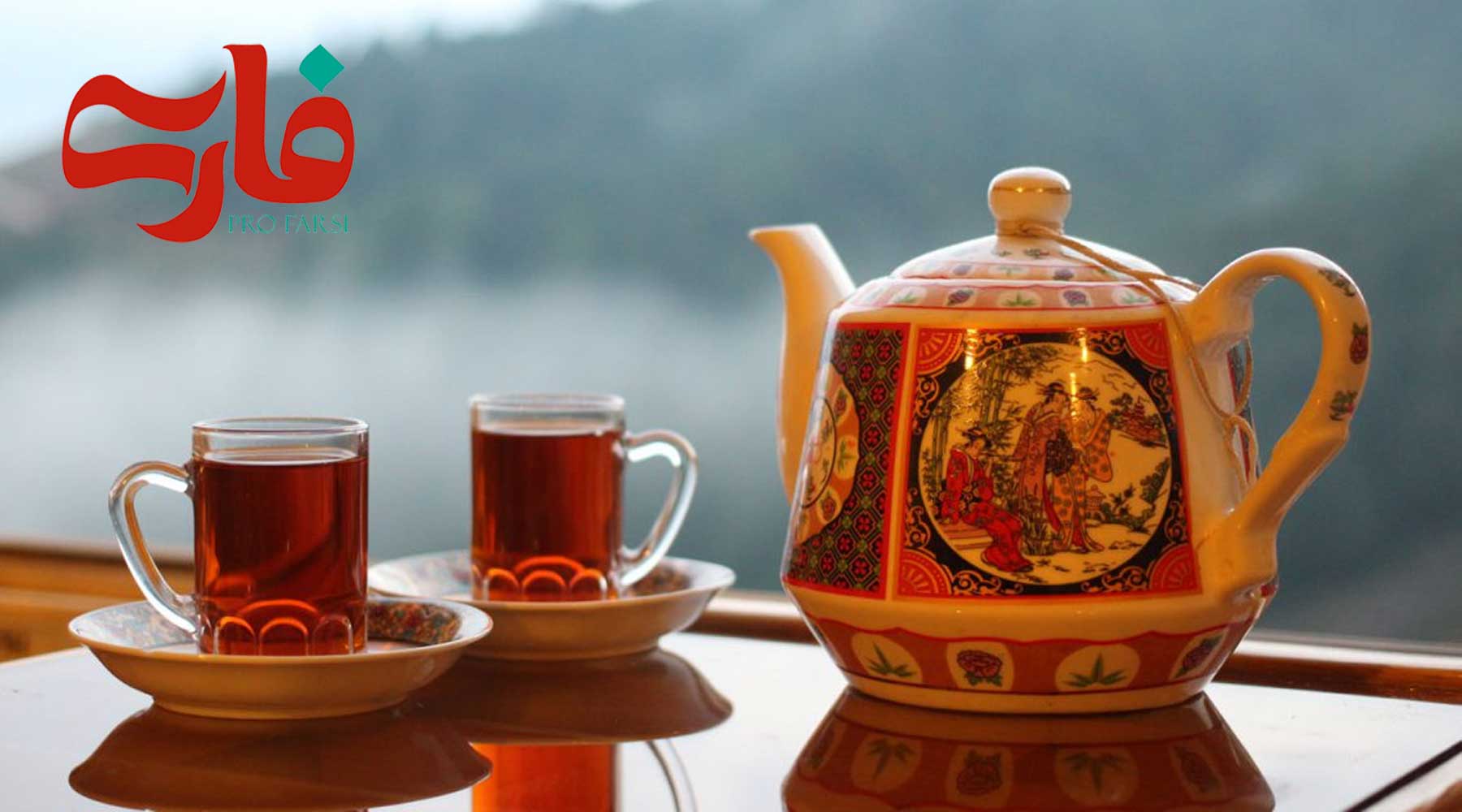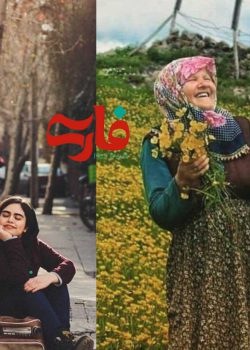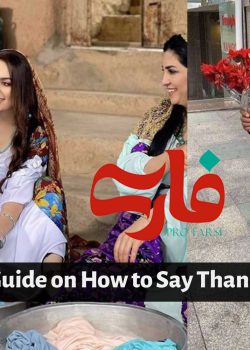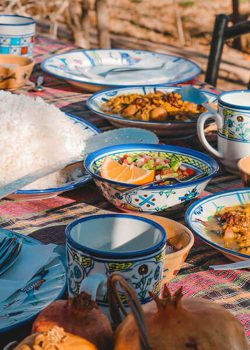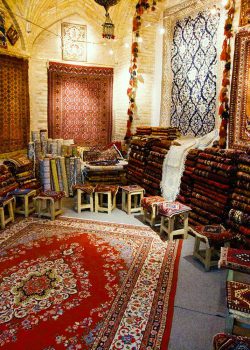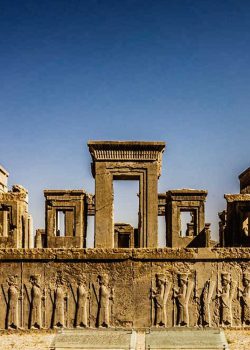Persian tea, or “chai,” holds a cherished place in Iranian culture, symbolizing hospitality, social connections, and relaxation. With a history deeply rooted in tradition, Persian tea is more than just a beverage—it’s a cultural emblem. Brewed from high-quality loose black tea leaves, Persian tea offers a robust and full-bodied flavor that is distinctively Iranian. Often prepared using a samovar, a traditional tea kettle, tea drinking in Iran is a communal affair, fostering conversations, storytelling, and moments of respite. Served in delicate cups, Persian tea is enjoyed throughout the day, reflecting the values of warmth, friendship, and taking pleasure in the simple joys of life.
One of the notable old Persian rituals involving tea is the act of serving and drinking tea as a gesture of hospitality. Offering tea to guests is deeply ingrained in Persian culture and is considered a sign of warm welcome and friendship. When guests visit Iranian homes or establishments, it is customary for the host to serve tea as a way of honoring their presence and making them feel comfortable.
As for places to enjoy tea in Iran, here are a few recommendations:
- Tehran Grand Bazaar (Tehran): This bustling marketplace is not only a hub for commerce but also a center for traditional Persian tea houses. Here, you can experience the authentic ambiance of Iranian tea culture while exploring the vibrant surroundings.
- Bagh-e Ferdows (Isfahan): Located in the historical city of Isfahan, Bagh-e Ferdows is a beautiful garden where you can relax and unwind while enjoying a cup of tea. The serene atmosphere and picturesque surroundings create a perfect setting for savoring Persian tea.
- Darvish Tea House (Shiraz): This traditional tea house in Shiraz offers an authentic experience of Persian tea culture. With its cozy interior, traditional decor, and selection of teas, it provides a serene environment to enjoy a cup of tea while immersing yourself in the city’s rich history.
- Traditional Caravanserais (Various Locations): Throughout Iran, you can find ancient caravanserais that have been converted into tea houses. These historic buildings were once resting places for travelers along trade routes. They now serve as charming spots to appreciate Persian tea while admiring the architectural beauty of the past.
- Golestan Palace (Tehran): As a UNESCO World Heritage site, Golestan Palace is not only renowned for its stunning architecture but also offers a tranquil tea house within its grounds. Here, you can enjoy tea while being surrounded by exquisite Persian craftsmanship and beautiful gardens.
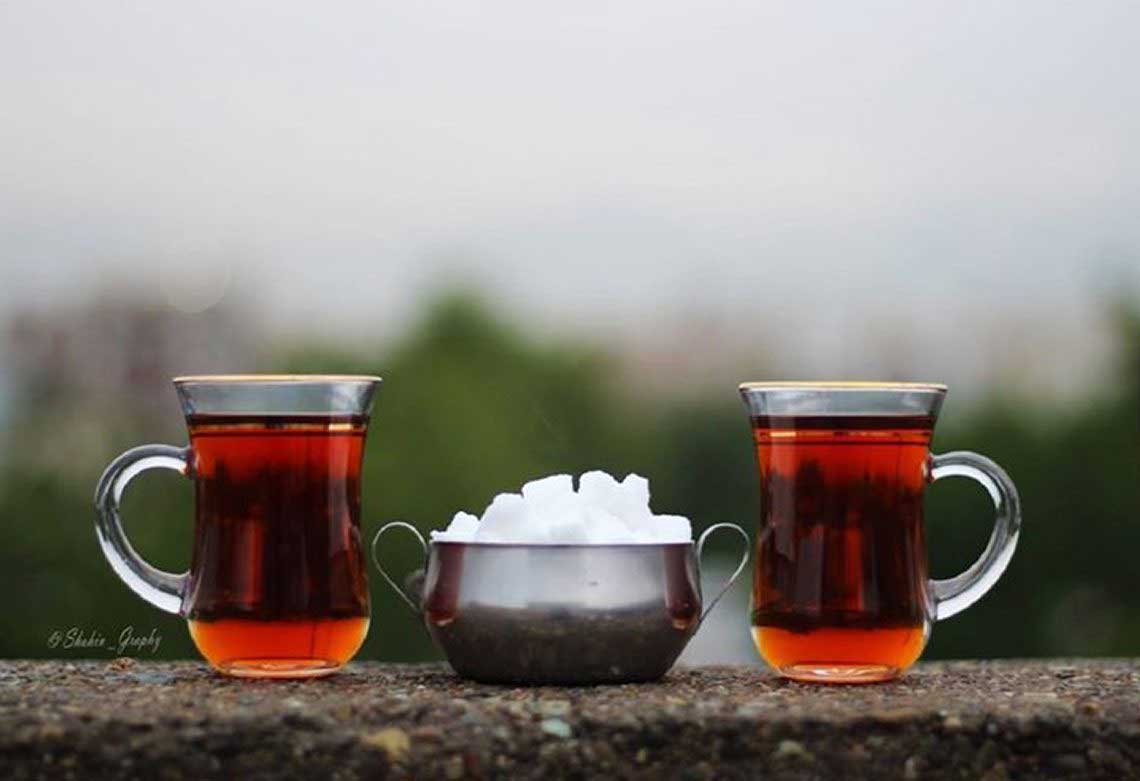
HOW TO BREW PERSIAN TEA | CHAII چایی
You will need the following ingredients and equipment:
Ingredients:
- Loose black tea leaves (preferably Ceylon or Earl Grey)
- Water
- Sugar (optional)
Equipment:
- Tea kettle or pot
- Tea infuser or teapot with a built-in strainer
- Tea cups
- Fill the tea kettle or pot with fresh cold water and bring it to a boil. It’s recommended to use good-quality water for the best flavor.
- Once the water comes to a boil, remove it from the heat and let it cool for about a minute. This allows the temperature to slightly decrease, ensuring optimal brewing conditions for the tea.
- Add 1-2 teaspoons of loose black tea leaves per cup to a tea infuser or directly to a teapot with a built-in strainer. Adjust the quantity based on your preference for stronger or milder tea.
- Pour the hot water over the tea leaves in the infuser or teapot, covering them completely. Allow the tea to steep for approximately 5-7 minutes, depending on your desired strength. You can adjust the steeping time to your preference.
- While the tea is steeping, you can pre-warm your tea cups by rinsing them with hot water. This helps maintain the temperature of the tea.
- Once the tea has steeped, remove the tea infuser or strain the tea from the teapot into the pre-warmed tea cups. Use a gentle pouring motion to avoid disturbing the settled tea leaves at the bottom of the pot.
- If desired, add sugar to taste. Persian tea is commonly enjoyed with a cube of sugar held between the teeth while sipping, but you can adjust the sweetness according to your preference.
- Stir the tea gently to dissolve the sugar, if added.
- Serve the tea immediately while it is hot, savoring the rich flavors and aromas of Persian tea.
Other flavors for Persian tea
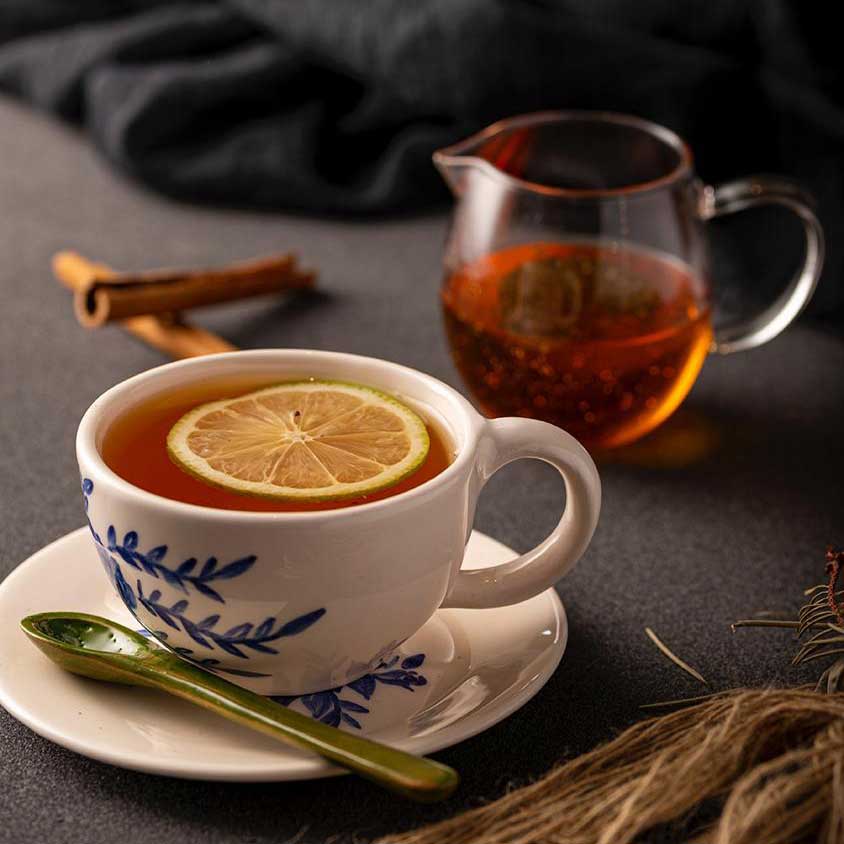
While plain black tea is the most common flavor of Persian tea, there are several other flavors and variations you can explore. Here are a few popular options for flavored Persian tea:
- Saffron Tea: Saffron, known as “zafran” in Persian, is a prized spice in Iranian cuisine. Adding a few strands of saffron to your tea while brewing can infuse it with a delightful floral and slightly earthy flavor, along with a vibrant golden color.
- Rose Tea: Persian culture has a deep appreciation for roses, and rose-infused tea is a beloved choice. You can add dried rose petals or rose water to your tea during the brewing process, resulting in a fragrant and delicate floral taste.
- Cardamom Tea: Cardamom, or “hel” in Persian, is a popular spice used in Persian cuisine. Adding a few crushed cardamom pods to your tea while brewing can create a uniquely aromatic and slightly spicy flavor profile.
- Mint Tea: Mint, or “na’na,” is widely used in Persian cooking and is a refreshing addition to tea. Fresh mint leaves can be steeped alongside the tea leaves, infusing the beverage with a cool and invigorating flavor.
- Fruit-infused Tea: You can experiment with infusing your tea with fruits such as dried orange peel, lemon zest, or dried berries. These additions can impart fruity and tangy notes to your tea, creating a delightful twist on the traditional flavor.
Persian tea is often enjoyed alongside various sweet and savory accompaniments. Here are some popular treats and snacks that complement Persian tea:

- Gaz: A traditional Persian nougat made from pistachios, almonds, rosewater, and honey. Gaz is chewy and sweet, providing a delightful pairing with tea.
- Sohan: A saffron-infused brittle toffee made with wheat sprouts, rosewater, pistachios, and almonds. Sohan has a rich flavor and a satisfying crunch, making it a favorite tea-time treat.
- Nan-e Berenji: Persian rice flour cookies flavored with rosewater and cardamom. These delicate and crumbly cookies are often enjoyed with tea, adding a subtle sweetness to the tea-drinking experience.
- Naan Khoshk: Traditional Persian dry bread or crispbreads that come in various shapes and sizes. They are typically made with wheat flour, sesame seeds, and spices. Naan khoshk can be dipped into tea, adding a crunchy texture to the sips.
- Noon-o Panir-o Sabzi: A classic Persian combination of flatbread (noon), cheese (panir), and fresh herbs (sabzi) such as basil, mint, and tarragon. This simple yet satisfying trio is often enjoyed with tea, allowing for a blend of flavors and textures.
- Shirini: Persian pastries and sweets are also commonly served with tea. These include a wide range of delights such as baklava, zoolbia, bamieh, and more. These treats add a touch of indulgence and sweetness to accompany the tea.
- Fresh Fruits: Fresh fruits like dates, grapes, and melons are sometimes enjoyed alongside Persian tea. They provide a refreshing contrast to the warmth of the tea and add a healthy element to the tea-time experience.
These are just a few examples of the treats commonly enjoyed with Persian tea. The combination of tea with sweet and savory accompaniments adds to the overall enjoyment of the tea-drinking ritual and creates a balanced and flavorsome experience.
Read More:
Related Posts

